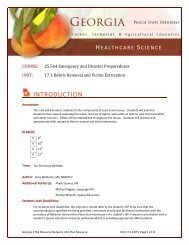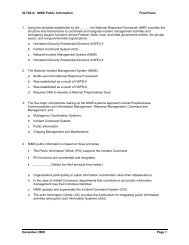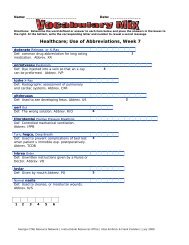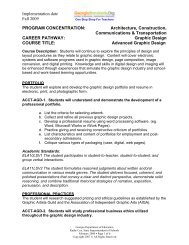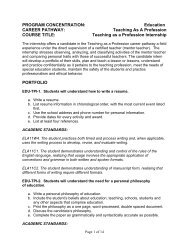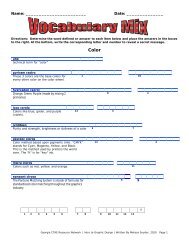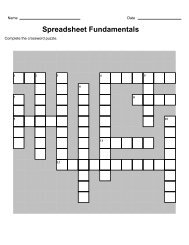emt-basic curriculum module 4
emt-basic curriculum module 4
emt-basic curriculum module 4
You also want an ePaper? Increase the reach of your titles
YUMPU automatically turns print PDFs into web optimized ePapers that Google loves.
State of WisconsinEMT-Basic: A Practice BasedApproach to EMS EducationIV.b) Abdominal tenderness and distentionc) Severe pain with radiation for the umbilicus to the backand shouldersd) May have signs of shockC. Abdominal aortic aneyrysm (AAA)1. Weakened, ballooned, and enlarged area of the wall of theabdominal aorta2. Signs and symptomsa) Gradual onset of lower lumbar and abdominal pain.Rupture associated with sudden onset of severe,constant abdominal painb) Pain described as “tearing”, may radiate to lower back,flank and pelvis.c) Nausea and vomiting possibled) Signs of shocke) Pulsating mass may be feltD. Other causes of acute abdomen1. Cholecystitis-inflammation of the gallbladder2. Intestinal obstruction3. Hernia4. Ulcers5. Esophageal varicesEmergency managementA. Initial assessment - ABCs, look for guarded position, be alert forvomiting and aspiration, shock, prioritize patientB. Focused History and Physical Exam - SAMPLE History, O-P-Q-R-S-T,baseline vital signs, gentle palpation of 4 quadrants (leaving mostpainful area for last), assess abdomen for rigidity, tenderness, ormassesC. Keep patient quiet and place in position of comfort, usually flexing thelegs is most comfortable (fetal position)D. Appropriate transportAPPLICATIONProcedural (How)1. Show illustrations of signs and symptoms of an acute abdomen.2. Demonstrate the steps in providing emergency medical care to a patient withan acute abdomen.Contextual (When, Where, Why)1. Acute abdominal pain is a common condition that EMTs will encounter.2. Underlying causes vary greatly and may often signal a very serious medicalcondition.Module 4-104



